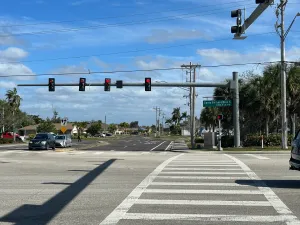
1 killed in Cape Coral crash; Santa Barbara Blvd. closed for hours
A person was killed in a crash at the intersection of Santa Barbara Boulevard and Southeast 24th Street.

On Wednesday afternoon, a new tool was put in the Gulf of Mexico to monitor the water and support Red Tide research, human health, and the ecosystem.
Ten miles offshore and 30 feet underwater, giant cement blocks will help scientists better understand what’s happening in the water.
“So the importance of Kimberley’s reef is it’s an underwater platform. It’s in a fixed location. We can put instrumentation out there. We can study animals. We can study algae and plant life all at the same spot. And we can study it over time,” professor in The Water School at FGCU, Mike Parsons, said.
Eighteen culverts weighing more than 19,000 pounds each provide fascinating research opportunities and habitats for marine life.
“And the fish are gonna be like, hey, look, here’s a new home. This is the new IT neighborhood,” Parsons said.
And the team can better understand how those fish, crabs, and other creatures respond to change.
“We can monitor for red tide and the impacts of red tide,” Parsons said. “How do fish populations react to red tie? Do they move away? Do they, unfortunately, die? When do they come back?”
And those are big questions while Southwest Florida deals with a Red Tide outbreak and dead fish scattered in the waters off Bonita Beach. Sensors and instruments on the buoys monitor oceanographic conditions on the Gulf and reef.
“There’s a lot of questions that we can ask, there’s a lot of data that we know absolutely nothing about. So that’s the really exciting part about this is that we’re deploying a reef from the very beginning,” Adam Catasus, a scientist in The Water School at FGCU, said.
Catasus WINK News’ captain for the day, said the sensors will also help protect the shoreline.
“And then when these fronts come through, and hurricanes come through troubled storms come through, we’re going to document all of that,” Catasus said.
The reef will be utilized by students studying environmental science, and other fields of study like engineering, education, and art.
Parsons predicts they will rapidly start seeing fish poke around.